What’s on Your Bookshelf?
Spring
2019
Member Profiles
What’s on Your Bookshelf?
We asked Sigma Pi Sigma members, What are some of the books that have had an impact on your science journey? There were many of the books you’d expect (e.g., “Surely You’re Joking, Mr. Feynman!”: Adventures of a Curious Character and Stephen Hawking’s A Brief History of Time from the nonfiction side, and Ender’s Game and The Hobbit from the fiction camp) and a healthy number of textbooks, but several of you also suggested books that may be a little further back on the shelves. Enjoy this sampling—maybe you’ll find some good ideas for your 2019 reading list.
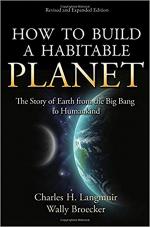 Douglas Arion (inducted at Carthage College in 2007), professor of physics, astronomy and entrepreneurship at Carthage College and the president of Galileoscope LLC, uses How to Build a Habitable Planet: The Story of Earth from the Big Bang to Humankind by Charles H. Langmuir and Wally Broecker as the core reference for his public outreach program. He notes, “No other book covers the history of the Universe, with all the physics, chemistry, and biology . . . If you don’t understand where it all came from, and why it works the way it does, how can you study or understand anything else?!” He also praises it as well written and highly approachable for a range of audiences.
Douglas Arion (inducted at Carthage College in 2007), professor of physics, astronomy and entrepreneurship at Carthage College and the president of Galileoscope LLC, uses How to Build a Habitable Planet: The Story of Earth from the Big Bang to Humankind by Charles H. Langmuir and Wally Broecker as the core reference for his public outreach program. He notes, “No other book covers the history of the Universe, with all the physics, chemistry, and biology . . . If you don’t understand where it all came from, and why it works the way it does, how can you study or understand anything else?!” He also praises it as well written and highly approachable for a range of audiences.
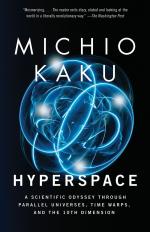 Many readers can likely identify with Lisa Genovese (Grand Valley State University, 2009) who could only understand about 10 percent of the content the first time she read Hyperspace: A Scientific Odyssey Through Parallel Universes, Time Warps, and the 10th Dimension by Michio Kaku. She borrowed the book from her brother’s bookshelf, and it sparked her love of physics. Lisa is now a diagnostic medical physicist for a consulting firm in Maryland.
Many readers can likely identify with Lisa Genovese (Grand Valley State University, 2009) who could only understand about 10 percent of the content the first time she read Hyperspace: A Scientific Odyssey Through Parallel Universes, Time Warps, and the 10th Dimension by Michio Kaku. She borrowed the book from her brother’s bookshelf, and it sparked her love of physics. Lisa is now a diagnostic medical physicist for a consulting firm in Maryland.
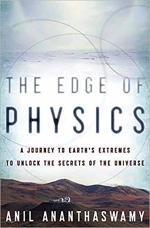 The Edge of Physics: A Journey to Earth’s Extremes to Unlock the Secrets of the Universe by Anil Ananthaswamy is the only book that Edwin Ward (Colby College, 2016) has found that “investigated a scientific field through the perspective of the tools used to study it.” Currently a law student at the George Washington University, Ward is on a mission to find as many additional copies of the book as he can to share with others interested in reading about science. This is a book that “walks the fine line between educating the armchair scientist while maintaining the interest of the professional one.”
The Edge of Physics: A Journey to Earth’s Extremes to Unlock the Secrets of the Universe by Anil Ananthaswamy is the only book that Edwin Ward (Colby College, 2016) has found that “investigated a scientific field through the perspective of the tools used to study it.” Currently a law student at the George Washington University, Ward is on a mission to find as many additional copies of the book as he can to share with others interested in reading about science. This is a book that “walks the fine line between educating the armchair scientist while maintaining the interest of the professional one.”
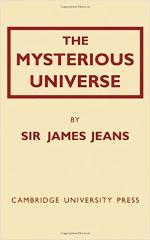 Two APS Fellows, Kenneth W. Ford (Honorary, 2000), the retired executive director of the American Institute of Physics, and Ronald E. Mickens (At-Large, 1966), the Distinguished Fuller E. Callaway Professor of Physics at Clark Atlanta University, cited Sir James Jeans’s The Mysterious Universe as a transformative piece of nonfiction from their childhoods. Mickens notes that as a young African American in Virginia in the 1940s and ’50s he had limited access to books in the segregated public library. He tells the tale of finding this particular book in the catalog: “Opening it and examining its pages at random, I saw symbols not seen before and discussions of topics unknown to me. Over a period of several months, I read and reread this volume, understanding little of the discussions on quantum mechanics and relativity. However, I was determined to do what was needed to one day fully comprehend its contents. This was the beginning of my serious journey into science. The book was never returned . . . but that is a story in and of itself.” Dr. Mickens’s secret is safe with the countless Clark Atlanta physics graduates who benefited from his scholarship.
Two APS Fellows, Kenneth W. Ford (Honorary, 2000), the retired executive director of the American Institute of Physics, and Ronald E. Mickens (At-Large, 1966), the Distinguished Fuller E. Callaway Professor of Physics at Clark Atlanta University, cited Sir James Jeans’s The Mysterious Universe as a transformative piece of nonfiction from their childhoods. Mickens notes that as a young African American in Virginia in the 1940s and ’50s he had limited access to books in the segregated public library. He tells the tale of finding this particular book in the catalog: “Opening it and examining its pages at random, I saw symbols not seen before and discussions of topics unknown to me. Over a period of several months, I read and reread this volume, understanding little of the discussions on quantum mechanics and relativity. However, I was determined to do what was needed to one day fully comprehend its contents. This was the beginning of my serious journey into science. The book was never returned . . . but that is a story in and of itself.” Dr. Mickens’s secret is safe with the countless Clark Atlanta physics graduates who benefited from his scholarship.
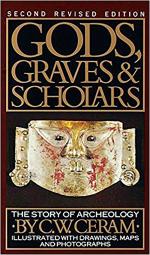 Renowned astronomer Virginia Trimble (Oglethorpe University, 1993) credits her love of science with two books from outside the physical sciences. She recalls reading Gods, Graves, and Scholars: The Story of Archaeology by C. W. Ceram and the genetics primer You and Heredity by Amram Scheinfeld over ten times as a child. They left an indelible mark on her and stoked a lifelong curiosity for science.
Renowned astronomer Virginia Trimble (Oglethorpe University, 1993) credits her love of science with two books from outside the physical sciences. She recalls reading Gods, Graves, and Scholars: The Story of Archaeology by C. W. Ceram and the genetics primer You and Heredity by Amram Scheinfeld over ten times as a child. They left an indelible mark on her and stoked a lifelong curiosity for science.
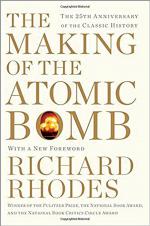 Joshua Frey (Ripon College, 2009), a US Army nuclear and counterproliferation officer with a self-professed “substantial reading problem,” describes The Making of the Atomic Bomb by Richard Rhodes as a text that “should serve as both an engaging primer on the basic science and on how government decision-making is supported by, and may go counter to, the advice of scientists.” This Pulitzer Prize–winning book is in the canon for those interested in the history of nuclear weapons and the Manhattan Project.
Joshua Frey (Ripon College, 2009), a US Army nuclear and counterproliferation officer with a self-professed “substantial reading problem,” describes The Making of the Atomic Bomb by Richard Rhodes as a text that “should serve as both an engaging primer on the basic science and on how government decision-making is supported by, and may go counter to, the advice of scientists.” This Pulitzer Prize–winning book is in the canon for those interested in the history of nuclear weapons and the Manhattan Project.
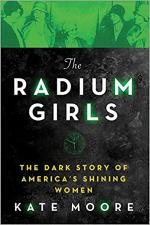 One of the more recently published books recommended is The Radium Girls: The Dark Story of America’s Shining Women by Kate Moore. The book is written from the perspective of the women in their 20s who basked in the coveted jobs working in radium dial factories until the element’s poisonous effects took hold. Brittney Hauke (Coe College, 2016), a graduate student in materials science at Arizona State University, sees this book as a critical reminder of “why scientists need to make our discoveries available to the general public.”
One of the more recently published books recommended is The Radium Girls: The Dark Story of America’s Shining Women by Kate Moore. The book is written from the perspective of the women in their 20s who basked in the coveted jobs working in radium dial factories until the element’s poisonous effects took hold. Brittney Hauke (Coe College, 2016), a graduate student in materials science at Arizona State University, sees this book as a critical reminder of “why scientists need to make our discoveries available to the general public.”
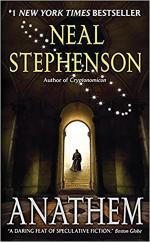 Fiction selections weren’t as prevalent on our readers’ lists, but Terri Gilbert (New Mexico Institute of Mining and Technology, 1991), a neuroscientist building a data/analysis repository for translational brain health, offered Anathem by Neal Stephenson. While she notes that Stephenson’s use of language can be somewhat disorienting at first, if you let yourself get immersed in the book it is “a means to allow your mind to understand concepts in string theory and alternate universes that seem inaccessible” on the surface. Stephenson’s postapocalyptic tale features mathematicians, scientists, and philosophers who live in isolation from the public until their assistance is required to solve a mind-bending crisis.
Fiction selections weren’t as prevalent on our readers’ lists, but Terri Gilbert (New Mexico Institute of Mining and Technology, 1991), a neuroscientist building a data/analysis repository for translational brain health, offered Anathem by Neal Stephenson. While she notes that Stephenson’s use of language can be somewhat disorienting at first, if you let yourself get immersed in the book it is “a means to allow your mind to understand concepts in string theory and alternate universes that seem inaccessible” on the surface. Stephenson’s postapocalyptic tale features mathematicians, scientists, and philosophers who live in isolation from the public until their assistance is required to solve a mind-bending crisis.
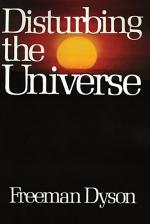 Fans of Ed Neuenschwander’s Elegant Connections column in Radiations will recognize the name Freeman Dyson as a significant influence on Neuenschwander’s writing and a frequently cited source. David Cornell (Principia College, 1984), a retired professor who now tutors online, praises Dyson’s Disturbing the Universe as capturing how “the universe and man interact through the wholeness of being, including our scientific and cultural selves, the latter characterized by love of music, arts, and books.”
Fans of Ed Neuenschwander’s Elegant Connections column in Radiations will recognize the name Freeman Dyson as a significant influence on Neuenschwander’s writing and a frequently cited source. David Cornell (Principia College, 1984), a retired professor who now tutors online, praises Dyson’s Disturbing the Universe as capturing how “the universe and man interact through the wholeness of being, including our scientific and cultural selves, the latter characterized by love of music, arts, and books.”
For those of you bibliophiles who are interested in digging a little deeper, check out the Niels Bohr Library & Archives’ new blog Ex Libris Universum (http://bit.ly/ExLibrisAIP). The blog features AIP’s recently acquired Wenner Collection of rare books. The collection contains writings on the most important discoveries in physical sciences over the past four centuries. The 3,800 volumes were carefully curated over a 25-year period by David Wenner and feature works by Ptolemy, Galileo, Huygens, Halley, Newton, Curie, Laplace, and more.
